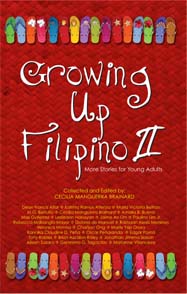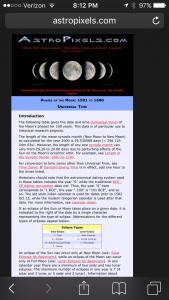That moment when you calculate the moon phases in 1521 and can now reckon time precisely in the world of your novel. Kilat-kilat, the time when the moon is a flash of lightning. Ah, twenty-first century tech meets the precolonial Philippines!
Category Archives: Writing Practice
Book Expo America 2016 – Highlights, Part 1
Gallery

This gallery contains 7 photos.
Last week was Book Expo America 2016, held at McCormick Place here in Chicago. I was so busy soaking it all in that I didn’t have time to write a proper post. So here it is, highlights of my experience … Continue reading
Happy Earth Day 2016!
 I love history. One of the best things about writing a novel is the historical research I get to do. You learn that human beings weren’t so different in the past – love, hate, passion, war, the search for meaning, worth, safety and peace. You also learn that, as a species, humanity is amazingly versatile and open in our thinking.
I love history. One of the best things about writing a novel is the historical research I get to do. You learn that human beings weren’t so different in the past – love, hate, passion, war, the search for meaning, worth, safety and peace. You also learn that, as a species, humanity is amazingly versatile and open in our thinking.
Today, in 2016, we Westerners can talk about this exquisite planet we live on in terms of biodiversity, economics, politics, climate patterns, technology. But I am reaching back to the precolonial Philippines, to my ancestors – to a time when each mountain, river, stream, and ancient tree was understood to be the dwelling place of a diwata, a nature spirit. A god or goddess. Nature was not only biomass, it was sacred.
Okay, take a breath, my darlings. Take my hand, for just this moment and don’t let go. I’ve gotcha. Put the hat of Western skepticism and rationalism on a safe shelf for now. Take this journey to long-ago Southeast Asia with me.
It was not a paradise. It was not a fantasy. It was simply a place where nature was alive.
The implications were this: A tree was not just a tree, it was the dwelling place of the gods. So you don’t just cut a tree down. You ask it for permission. You pray for its safety and blessing. It provides you, at the right time of year so that you don’t deplete its life, with timber for a house, a canoe, an outrigger. You transform the body of the tree. But the spirit of the tree continues…in the things you use everyday. Everything has a spirit. Everything, like you, has a spiritual consciousness and is alive.
Today, in places where people hold the understanding that land, water, air, and plant-life are sacred…the Earth is tended, protected, and loved. And the land loves back, providing nourishment and incredible beauty.
How would we live if we experienced the trees, lakes, rivers, mountains, cliffs, prairies, glaciers, and oceans as holy and alive? What would we do differently?
NaNoWriMO Day 4.1
Getting a late start today – it was good to sleep in a little. So many distractions. The sun is out and the fall earth smells good. The cafe is noisy and filled with crying kids. My dog needs walking. I’m buzzing with static. LOL. This is just how it is sometimes. Some days for writers, I think it’s just about showing up on the Page. SHOW UP! (Or blog about NaNoWriMo process – the best distraction of all.)
NaNoWriMo – Getting passed head static
It’s day 3 of Nanowrimo. 5,880 words total so far. (Making time because who knows how much I can write over Thanksgiving travels.) Today, I wrote my big battle scene – the one that has me scared and shaking in my boots. How does a pacifist write a battle scene? LOL. Well…all I can say is there’s something to doing the very thing that scares you the most. I have a tremendous sense of accomplishment having written a first draft of this scene, flaws and all. It was also totally useful to put a writing soundtrack on…so I could stop thinking and analyzing and get passed the distracting static in my head. Today’s soundtrack: Grace Nono’s Dalit. (Dalit means gift or offering.) Strong, spiritual, sensual, earthy and devoted to Pinay traditions. Would love to be like her when I grow up!
NaNoWriMo 2011
This year, I’m doing NaNoWriMo for the first time – for both the fun and the discipline. Woke up this morning at 6 a.m. and wrote 3,800 words. So happy. Is there such a genre as eco-historical fiction with a supernatural twist? Like a martini with coconut and lime.
– M.G.
Historical Research in the Digital Age
Yesterday, I spent the morning reading sixteenth-century Spanish reports of their Philippine colonial endeavor on my Kindle. Yes, Emma Helen Blair & James Alexander Robertson’s The Philippine Islands, 1493 – 1898 is digitized (at least partially). It was the first thing I downloaded when I got my e-reader last year. Facetime: By evening, I was sitting with other bibliophiles, artists, and writers in a real living room with people lovingly handling the binding and pages of books written in Hebrew, Yiddish, and English with fine illustrations and gilded edges. One was 100 years old; the dust on the spine was real.
Ten years ago, cheery and beautiful YA historical novelist Harriette Gillem Robinet was the first person I heard urge writers to use Inter-library loan to borrow books from the Library of Congress. What freedom of the mind! To be able to borrow books from the national library where they collect titles you can’t find in your city or state libraries. When you’re researching something as seemingly remote (to some) and obscure (to others?) as the 16th century Philippines, it’s brilliant to have the LOC at your fingertips. Now, they’re online and you can search their catalogs. I drool.
Today, I’m in the final push…to really lock-in what I know and what I don’t know about my historical characters. So, for the last 2 weeks, it’s been a headlong rush into titles that are found regionally in Cebu – which is fabulous, except that I live in Chicago. What can a fictionist in the diaspora do?
This morning, my fingertips took me to World Cat (World Catalog) which purportedly has 1.5 billion items online. Google Books allows you to search inside many of its digitized books (“millions”). Refdoc.fr in France allows you to buy articles in academic journals and have them sent either via snailmail or electronically.
The state of human knowledge is changing every hour. For me, way out here in the Midwest, so far from the Philippines, it’s a godsend to be able to access the work of experts in the fields of Philippine anthropology, history, and literature.
Cutting edge technology in the service of history…who knew?
– MGB
Growing Up Filipino II

Growing Up Filipino II
I was 10 when someone gave me my first diary. It was small, hard-backed, had a teddy bear on it and, most importantly, a lock. What more could a kid want than a space where she could say anything she wanted? Crushes, rants, dreams, magic, love songs. It was all in there. What my first diary meant to me can be summed up in one delicious word: FREEDOM! I was hooked on recording the details of my life, the soaring search for the right word, playing with poems and stories from that moment onward.
I was one of those kids who loved her English teachers and was wide-eyed with wonder (and a little intimidated!) at these wise-owl women we called librarians. In L.A., in the 1980’s, there really weren’t too many stories with Filipino or Filipino American kids on the bookshelves. In third or fourth grade, I had an assignment to write a report on my heritage. When I went to the public library, the librarian wasn’t able to find any books that mentioned Filipino culture. She shook her head sympathetically. The invisibility of my culture in books sank into my consciousness quietly, stealthily. Because I never saw an author of my heritage, I’d assumed that people like me didn’t have any worthwhile stories. Hey, if my beloved English teachers and the wise librarians didn’t have stories of families like mine on the shelves, the stories couldn’t possibly exist, right? Kid logic.
So I wrote, secretly. I was a writer before I even had a word for it. No one in my family and no one we knew wrote stories. The grown-ups in my family were all nurses and navy men, vendors at sari-sari stores, and med techs who worked long hours and relaxed by watching TV and movies and feasting at potlucks. No books for pleasure, only text books for saving patients’ lives. I thought I was weird for writing my stories and kept my weirdness private. But, man, the joy of locking my bedroom door, curling up on my window-seat with flowery cushions, turning on the radio, and letting my black felt-tip pen glide in loops and swoops across the page!
The first time I ever met a Filipino writer, I was already 19, studying at UCLA, and firmly convinced we had no stories. It was one of the most awesome moments of my life to learn, at last, that someone from my background was an author. His existence showed me that dreams are possible (and that, perhaps, I wasn’t so weird after all). The writer happened to be N.V.M. Gonzalez, who is considered a national treasure and one of the founders of literature in the Philippines. He was also a keen teacher who respected his young students greatly. N.V.M. didn’t make a big deal about himself. Humble, like the characters in his short stories.
So it’s with the greatest pleasure that I share with you all the U.S. launch of the anthology Growing Up Filipino II, edited by Cecilia Manguerra Brainard. Cecilia is tireless in publishing stories from the Filipino diaspora — a fancy word that simply means my sea-faring, adventurous, and hard-working community has traveled and settled around the world. It’s filled with 27 stories from writers of Filipino descent who grew up in the Philippines, the United States, and Canada. There are wonderful writers like Marianne Villanueva, Paulino Lim, Jr., and Cecilia Brainard. One of my own YA short stories, “Shiny Black Boots,” is included in Growing Up Filipino II. And I count myself lucky to be in such fantastic literary company.
I think the me who was the L.A. Valley Girl in the 1980’s would have loved to see Growing Up Filipino II on the bookshelves. I wouldn’t have had to wait so long to learn that we, too, had stories worth reading. And to my friends who, also, never knew that Filipino stories existed, this is a great time to introduce them to your teens. As a kid I loved Scott O’Dell’s Island of the Blue Dolphins and Elizabeth George Speare’s The Witch of Blackbird Pond. Stories of survival and resourcefulness, creating bonds of friendship, and taking care of your family are universal. James Baldwin said it best in his 1984 Paris Review interview: “Your self and your people are indistinguishable from each other, really, in spite of the quarrels you may have, and your people are all people.”
– MGB
How Creativity Works, A Theory
What a pleasure it is to witness creativity in all my friends. Just wanted to give a nod to the gods, goddesses, and muses that inspire their talents. When you read book jackets, author bios, artist statements, even articles about artists, there’s often a focus on the specific piece or project they’re promoting. People get known for that one or, possibly, two fields they do well. The public was surprised to learn that John Lennon drew.
But when I think of my artist and writer friends and family, so many of them are creative in more than one arena. My ceramicist friend, Renaissance Queen, can sew a velvet gown, paint a mural, and cook a mean roast chicken. My musician friend, Dark Side of the Moon, plays guitar the way people breathe, does graphic design and water colors, and cooks some mean Korean short-ribs. My cousin, Can Rewire Your House And Redesign It Too, has a crazy force of creativity running through her: photography, painting, interior design. And she cooks a mean set of cupcakes that look like sculptured flowers and butterflies, only they’re made of sugar.
All this to say — Creativity is Polymorphous. It takes many forms, busts out like an unstoppable riot of color, sound, movement…spirit. It’s not about being an “expert” in all of them (though there are those who are that, too). It’s about the Process taking over.
As for me, I’m really glad they all like to cook.
– MGB
Flow, Stop, Go
One of the things I love about writing is what, over the years, I’ve come to know as The Flow. It’s that Time beyond time. It’s when the words come, in a smooth rush or a river of images, and I no longer feel I’m “in control” of the story. The Voice that rings in my body resounds like a bell tolling inside. I’m not really sitting at my desk or table or even really conscious of myself anymore. I become the pen and the ink rolling, spreading, curving on the page, the Energy of the Story as it comes. To me, as an artist, those moments are sacred. It’s a kind of surrender to intuition — I love that.
(Incidentally, I feel the same way about prayer. Fixed words usually don’t do it for me. Intuition and opening myself up to the larger Creative force feels more honest, more in-the-moment.)
There have been periods when I’ve written for 13 hours and not noticed that time has passed. It’s a kind of joyous absorption in something larger than myself.
What I know as F L O W, Robert Olen Butler, in his creative writing book FROM WHERE YOU DREAM, calls a “trancelike state”. And there are things we all do to slip into the trance. Me personally? I light a candle. I say whatever prayer comes to mind, mostly in the form of “Thank You, thank You, thank You for this precious time.” Or “Let me hear what needs to be heard.”
But these last two days, with my son home and sick and the trick of learning how to balance historical research with creative writing, email to respond to, deadlines, and catching a virus — well, it’s been less F L O W than Stop’n’Go. *lol*
You know those kind of days? When life seems to conspire against your showing up on the Page? Yes, time to cultivate a little patience and nudge my sense of humor.
Does F L O WÂ work the same way for musicians? Painters? Sculptors? Other writers? I wonder.


